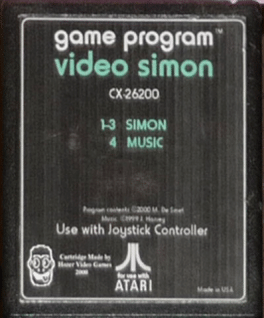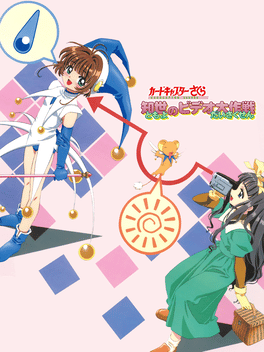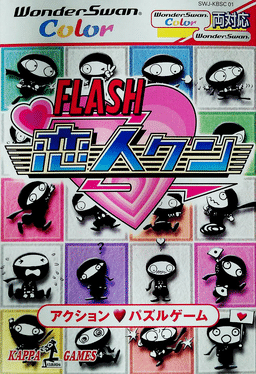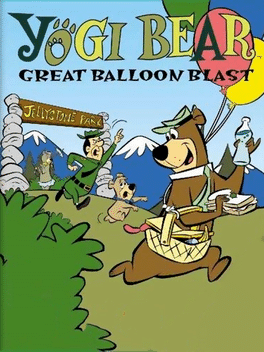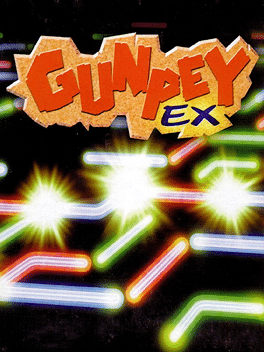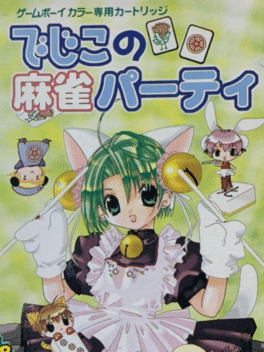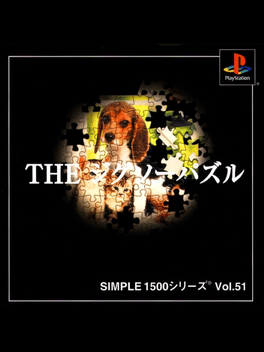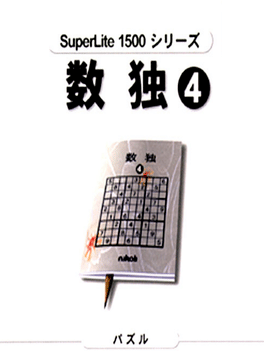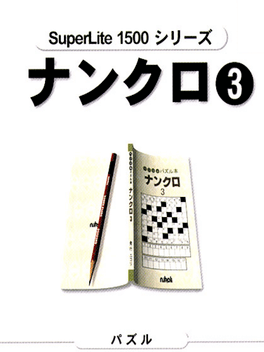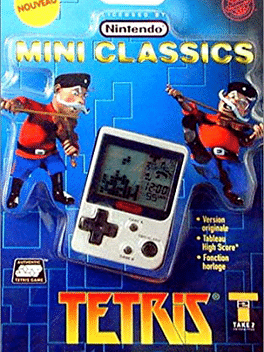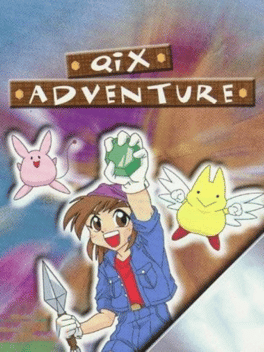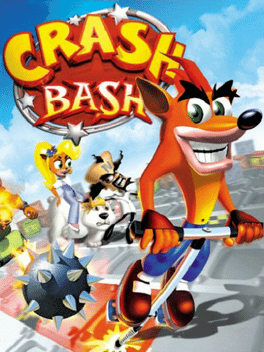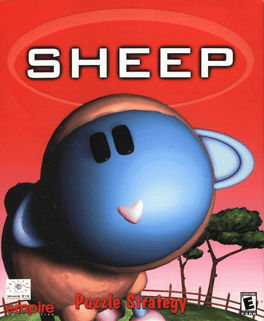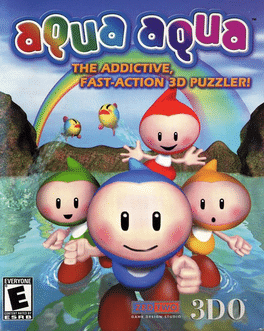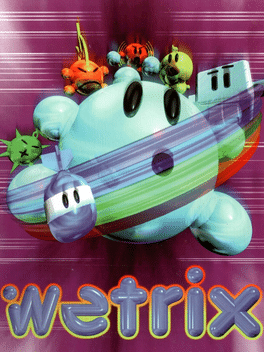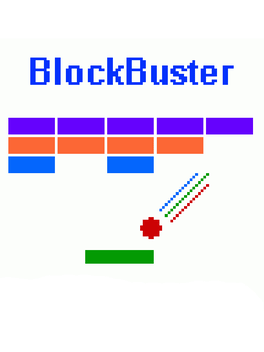New Ps3 Games - Page 261
-
Video Simon
2000
-
Cardcaptor Sakura: Tomoyo no Video Daisakusen
2000
Step into Tomoyo's shoes and film Sakura in this anime adaption for Dreamcast. -
Flash Koibito-Kun
2000
Flash Koibito-Kun
2000
Flash Koibito-Kun is a Puzzle game, developed by Koto and published by Koubunsha, which was released in Japan in 2000. -
Yogi Bear: Great Balloon Blast
2000
North American GBC Port of "Pop'n Pop", repurposed with the Yogi Bear license. In the addictive, balloon-bursting tradition of POP 'N POP and BUST-A-MOVE comes YOGI BEAR: Great Balloon Blast from Taito and Bam Entertainment. Jellystone Park is holding a Balloon Fest and Yogi Bear (that's you!) knows this is the perfect opportunity to grab hold of some delicious picnic baskets. But first you need to clear the skies of a ton of fast-moving, falling balloons. Guide Yogi across the bottom of the screen, sending balloons shooting upwards from your special picnic basket. The object is to align three balloons of the same color together. When you do, all three pop and disappear, your score goes up, and more balloons drop down. Clear the whole stack before they reach the ground or it's game over. If you're quick and clever, you can cause high-scoring chain reaction explosions that will make your job a little easier. When you feel ready, you can go head-to-head against a friend in Link cable mode. YOGI BEAR: Great Balloon B -
Kids Station: Hello Kitty no Oshaberi Town
2000
Hello Kitty no Oshaberi Town is a collection of 16 mini games where the players can learn about colors, numbers, sounds, animals, etc. The mini games go from paint a drawing, buy items at the market, clean the room, catch butterflies, set the clock time, etc. There are some 2 player mini-games as well. -
Gunpey EX
2000
Gunpey EX
2000
Gunpey offers a unique puzzle experience. As lines of various angles climb up the screen, the player's objective is to flip the lines, located in squares, to connect them over five columns. Connecting lines from left to right remove the connected row. If an incomplete line reaches the top of the screen, the game is over. -
Dejiko no Mahjong Party
2000
Dejiko no Mahjong Party is a Game Boy Color game, published by King Records, which was released in Japan in 2000. -
Simple 1500 Series Vol. 51: The Jigsaw Puzzle
2000
Simple 1500 Series vol. 51: The Jigsaw Puzzle features more than 200 different jigsaw puzzles, and the player can choose the difficulty level and there are different subjects and styles. -
SuperLite 1500 Series: Oekaki Puzzle 4
2000
Popular puzzle game collection completes the picture will fill the number of vertical and horizontal mass based on the fourth [Puzzle Poker ?first whenever visiting. Newly written and recorded 200 questions ranging from beginner to advanced can enjoy, play enough. In addition to a smooth configuration of button operation, Enjoy the game to suit their environment, such as screen positioning function. -
SuperLite 1500 Series: Sudoku 4
2000
Sudoku is a logic-based, combinatorial number-placement puzzle. The objective is to fill a 9×9 grid with digits so that each column, each row, and each of the nine 3×3 sub-grids that compose the grid (also called "boxes", "blocks", "regions", or "sub-squares") contains all of the digits from 1 to 9. The puzzle setter provides a partially completed grid, which typically has a unique solution. Completed puzzles are always a type of Latin square with an additional constraint on the contents of individual regions. For example, the same single integer may not appear twice in the same 9x9 playing board row or column or in any of the nine 3x3 subregions of the 9x9 playing board. The puzzle was popularized in 1986 by the Japanese puzzle company Nikoli, under the name Sudoku, meaning single number. It became an international hit in 2005. SuperLite 1500 Series - Suudoku 4 is the fourth sudoku game in the series for the Playstation One console that features over 198 different sudoku challenges. The game features 3 differ -
SuperLite 1500 Series: Nankuro 3
2000
A crossword is a word puzzle that normally takes the form of a square or rectangular grid of white and shaded squares. The goal is to fill the white squares with letters, forming words or phrases, by solving clues which lead to the answers. In languages that are written left-to-right, the answer words and phrases are placed in the grid from left to right and from top to bottom. The shaded squares are used to separate the words or phrases. Squares in which answers begin are usually numbered. The clues are then referred to by these numbers and a direction, for example, "4-Across" or "20-Down". At the end of the clue the total number of letters is sometimes given, depending on the style of puzzle and country of publication. Some crosswords will also indicate the number of words in a given answer, should there be more than one. -
Nintendo Mini Classics: Tetris
2000
Nintendo Mini Classics: Tetris is a keychain version of Tetris released only in Europe as part of the Nintendo Mini Classics line of toys. -
Qix Adventure
2000
Qix Adventure
2000
Can you trap the elusive line of energy that's bouncing all around? Based on the coin-operated classic, QIX, this GBC sequel to the puzzle-based original offers similar gaming styles and a few welcome updates. In this take, you'll use a cursor to draw boxes on the screen, avoiding the Qix. If you can draw a compete box without the Qix touching its perimeter, that area of the screen will disappear and get you one step closer to advancing. Adding an element of story, QIX ADVENTURE casts you in the role of Speedy, a treasure hunter who's traveled to a mysterious island. Each level that you pass will help you in your quest to rid the island of all its strange creatures. Easy to learn but extremely difficult to master, QIX ADVENTURE is addicting fun for puzzle lovers and other gamers. Are you quick enough for Qix? Find out alone or against a friend. -
Crash Bash
2000
Crash Bash
2000
star 7.2Crash Bash is a party game in which four people can play several mini-games as characters from the Crash Bandicoot series. The gameplay consists of 28 different mini-games and three distinct modes of play: Adventure, Battle, and Tournament. Crash Bash includes multiplayer compatibility for up to four human players with the use of the PlayStation Multitap. The games are organized from a central hub world from which spokes lead to different levels. -
Sheep
2000
Sheep
2000
Sheep is a sheep herding game. Unbeknownst to most people, sheep are actually aliens that were sent to observe the earth millions of years ago. In the process, they were dumbed down to the sheepish mammals we all know and love today. In this Lemmings-inspired game, your goal is to herd sheep across 28 hazard-filled levels so they can be rescued by their educated alien cousins. You play as one of the four sheep herders. These are the humans and dogs Bo Peep, Adam Halfpint, Motley and Shep. You herd four breeds of sheep and have to protect them from the evil Mr. Pear. -
Tall Twins Tower
2000
Tall Twins Tower
2000
Tall twins tower is the sequel to Tall Infinity and in this case the game was never released outside Japan. As in Tall Infinity the player manipulate multi-colored blocks to construct a tower. The players needing to complete ten floors of the tower to pass each stage. Players must avoid unnecessary moves or risk losing the game. There are three difficulty levels and different game modes (like endless mode or time attack). One of the new features is the slide mode in which using the R1 and L1 Button the player can move a whole line of blocks to the right or to the left, the game also features a 2 players split screen vs mode. -
Aqua Aqua
2000
Aqua Aqua
2000
Aqua Aqua (アクアアクア?), known in Europe as Aqua Aqua: Wetrix 2, is a puzzle video game for the PlayStation 2 and is the sequel to game Wetrix. It offers fewer features than Wetrix, but it features improved graphics and a new story mode. The aim of the story mode is to travel through four eras and survive attacks from monsters from each one. To survive the attacks simply get enough points to power up the shield. There is also an unlockable world if the player gets enough points. The game also offers a two player vs mode and a single player puzzle mode. The title was a launch game for the PlayStation 2 release in Europe. -
Monster Rancher Explorer
2000
The MONSTER RANCHER franchise returns with this thoroughly entertaining adventure for handheld gamers. Help the well-meaning Cox fight through 60 enormous, puzzle-filled levels, fending off certain monsters while allying yourself with others. Each level requires you to find a hidden key in order to advance to the next stage, a task that becomes increasingly difficult as things progress. Luckily, you're not going at it alone. You can unlock such friendly beasts as Gali, Hare, Mocchi, Suezo, and Tiger in order to help you fend off all enemies. Each of the friendly monsters serves as a power-up of sorts, increasing your overall speed, granting you temporary invincibility, and more. Fans of the series know just how fun collecting and utilizing monsters can be, and the premise is at its absolute best in this GBA installment. Cool, anime-style graphics abound throughout the massive gaming experience, which allows you to play alone or square off against a fellow Rancher. -
Wetrix GB
2000
Wetrix GB
2000
Wetrix GB is a Puzzle game, developed by Zed Two Limited and published by Imagineer, which was released in Europe in 2000. -
BlockBuster
2000
BlockBuster
2000
The mobile game Block Buster is a Breakout variant. The player controls a paddle at the bottom of the screen used to to hit a ball, which in turn hits the blocks. Sometimes when the ball hits a block, an item drops from it, providing multiple balls, a change of speed or altering the paddle size. To move on to a next stage, all blocks need to be removed from the screen. The game has 8 stages.
